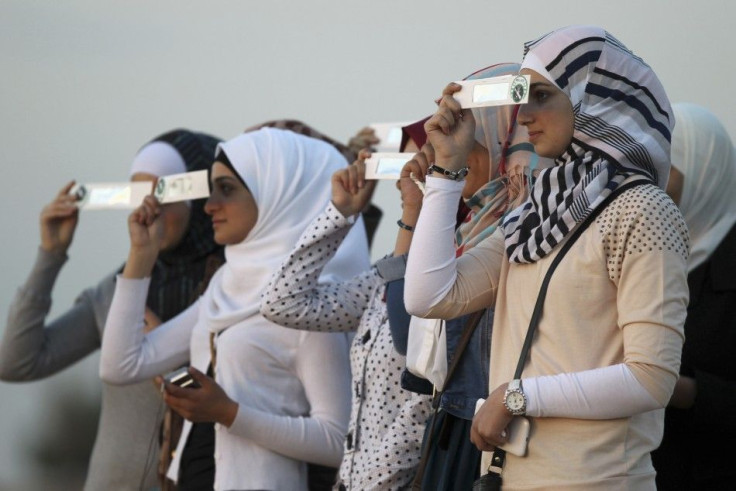Final 2014 Solar Eclipse: When And How To Safely View It Plus Where To Watch Online Via Live Stream

Mark your calendars! The year's final solar eclipse is set to occur on Thursday, Oct. 23. Skygazers will get an opportunity to observe a spectacular astronomical event for one last time in 2014. Here is when and where to best view the phenomena wherein the moon will partially interrupt the light from the sun, darkening the skies before the sunrise in the east and before sunset in the west. Also, find out where to watch the partial solar eclipse online via live stream.
This celestial event happens to be the second occultation in the month of October, following the full lunar eclipse on Oct. 8, 2014. However, this is going to be a partial phenomenon. Solar eclipse is an astronomical event that occurs when the Moon comes in between the Earth and the Sun, interrupting the light coming from it. It only takes place during the New Moon. As for the partial solar eclipse, the moon partly covers the Sun unlike full or total eclipse when the three bodies are in perfect alignment at some point.
According Time and Date, the solar eclipse will only be visible in east in Asia, in many parts of North America, Pacific and Atlantic. The eclipse begins at 19:38 UTC, reaches the peak at 21:45 UTC and ends at 23:52 UTC. Meanwhile, Universe Today states the Nunavut Territory near Prince of Wales Island will see the maximum partial solar eclipse as moon covers 81 percent of the Sun at sunset. In northern U.S., the maximum viewers will be able to see is 65 percent, and in southern states, it will get closer to 40 percent. According to Space.com, "the best views of the eclipse will be in the north, in Alaska and the Canadian arctic."
Observers must be very careful while viewing the solar eclipse. A cautionary advice to those who are looking forward to enjoy the spectacular view: Never look at the Sun with the naked eye!
For safely viewing the partial solar eclipse, one can use telescopes and binoculars with special filters. Never use these equipments without special glasses. The sun's ultraviolet and infrared light can harm the eye if people looks at the Sun directly. Another method to view the astronomical phenomenon is through a pinhole that can be build using cardboard or a box. A #14 welder's glass is also a safe option. One can also view 2014's final partial solar eclipse online via live stream on SLOOH.




















